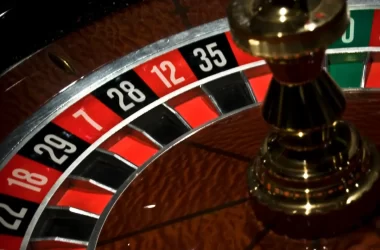Roulette, a classic game of chance found in casinos worldwide, has captivated players for centuries with its simple yet alluring design. However, beneath its glamorous exterior lies a foundation built on mathematics and probability. Understanding these principles is key to developing a successful strategy in roulette. In this article, we’ll delve into the mathematics behind roulette and explore how probability shapes your approach to the game.
The Basics of Roulette
Before delving into the mathematics, let’s review the basics of roulette. The game features a spinning wheel with numbered pockets, typically ranging from 0 to 36 in European roulette (with an additional 00 pocket in American roulette). Players place bets on where they think the ball will land after the wheel is spun. Bets can be placed on individual numbers, groups of numbers, or various other outcomes.
Probability and Odds
At the heart of roulette lies probability theory, which governs the likelihood of different outcomes occurring. Each bet in roulette carries its own probability of winning, which is directly linked to the payout odds offered by the casino. Understanding these probabilities is crucial for developing an effective betting strategy.
For instance, in European roulette, there are 37 pockets (18 red, 18 black, and one green 0). If you bet on a single number, your chances of winning are 1 in 37, or approximately 2.7%. This corresponds to payout odds of 35 to 1, meaning you’ll win 35 times your initial bet if successful.
Likewise, bets on red or black, odd or even, or high or low numbers have a probability of approximately 48.6%, with a corresponding payout of 1 to 1. These bets offer higher odds of winning but lower payouts compared to single number bets.
Expected Value
One of the fundamental concepts in probability theory is expected value (EV), which represents the average outcome of a random event over the long term. In roulette, each bet has an associated EV that reflects its profitability.
To calculate the EV of a bet, you multiply the probability of winning by the potential payout and subtract the probability of losing multiplied by the amount wagered. For example, let’s consider a $1 bet on a single number in European roulette. The potential payout is $35, and the probability of winning is 1/37. Therefore, the EV can be calculated as:
EV = (1/37) * $35 – (36/37) * $1 ≈ -$0.027
This negative EV indicates that, on average, you can expect to lose approximately $0.027 for every $1 wagered on a single number in European roulette. This illustrates why roulette is considered a game of negative expectation for players.
Optimizing Your Strategy
While roulette is ultimately a game of chance, understanding the mathematics behind it can help you make more informed decisions and optimize your strategy. Here are a few tips to consider:
Stick to bets with lower house edge: Focus on bets with higher probabilities of winning and lower payouts, such as red/black, odd/even, or high/low.
Manage your bankroll: Set limits on how much you’re willing to wager and avoid chasing losses.
Play European roulette when possible: The absence of the 00 pocket in European roulette reduces the house edge, giving you slightly better odds.
Conclusion
The allure of roulette lies in its blend of simplicity and excitement, but beneath the surface lies a world of mathematical intricacies. By understanding the probabilities and expected values associated with different bets, players can develop more effective strategies to improve their chances of success. While luck will always play a role, a sound understanding of the mathematics behind roulette can tilt the odds slightly in your favor.













